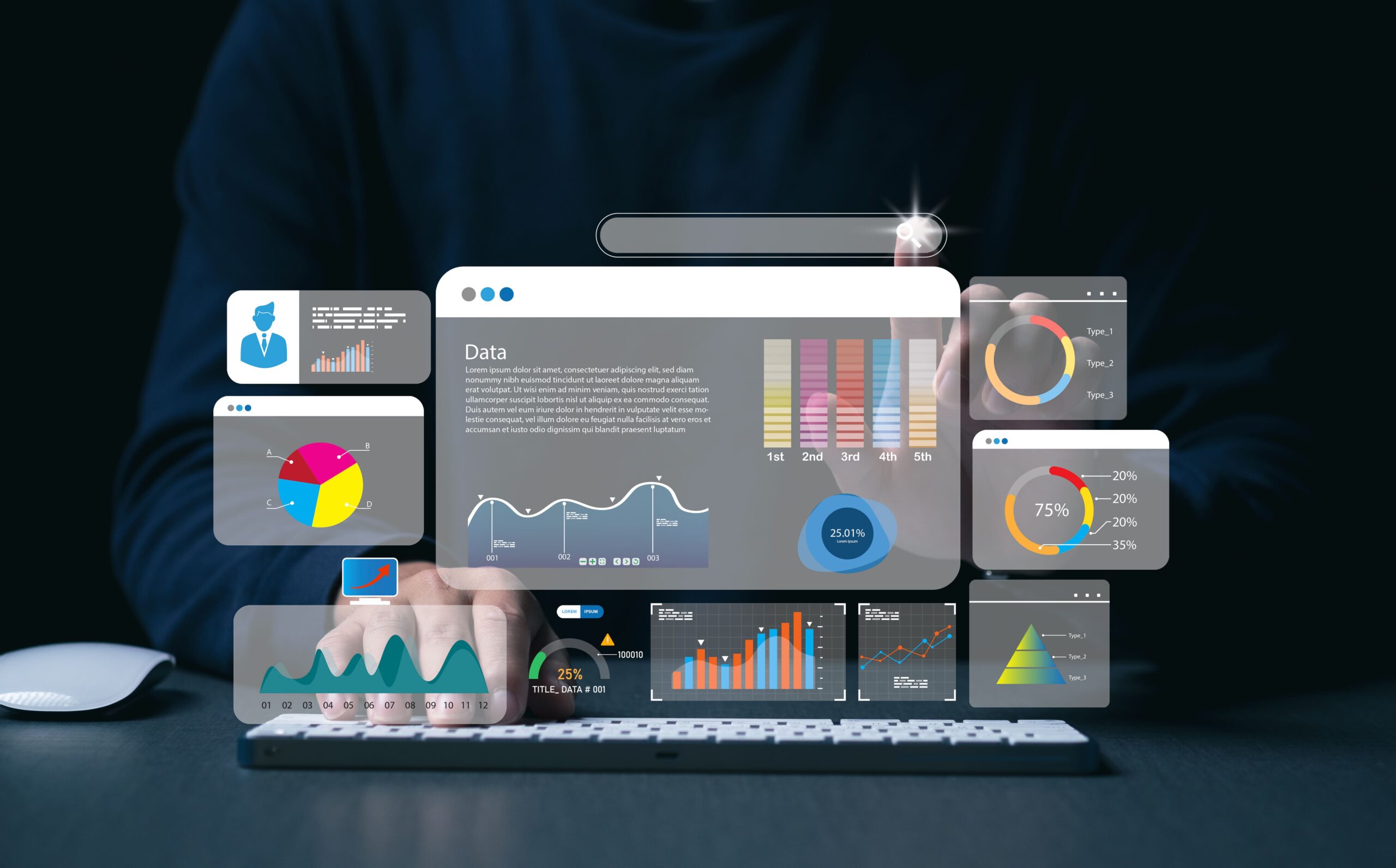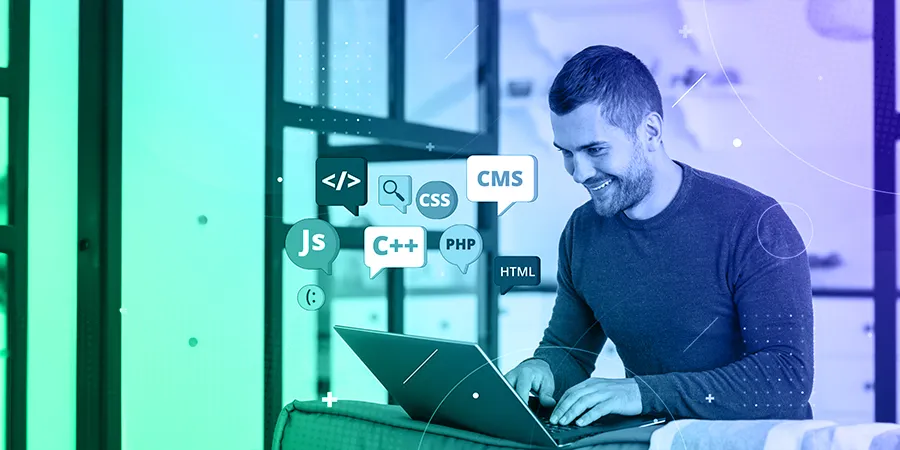Latest Trends in Software Development for 2025 – 2026
Introduction
The software development landscape moves in two-year sprints: what was “leading edge” in 2023 is table-stakes by mid-2025. Gartner now estimates that 70 % of net-new enterprise workloads will rely on AI-enhanced tooling, low-code platforms, or cloud-native stacks by Q4 2026. Add the push toward sustainability and tighter security rules, and the next 24 months promise some of the largest shifts we have seen since the DevOps boom a decade ago.
Below are ten trends every engineering leader should track—each reinforced by fresh statistics, peer-reviewed articles, and high-impact case studies.

1. AI-Powered Development Tools
AI coding assistants matured from novelty to daily companion in less than three years. GitHub reports that Copilot now generates 46 % of all new code in popular languages such as JavaScript and Python, up from 27 % in 2022.² Microsoft has doubled down with Copilot X, adding voice prompts, pull-request summaries, and unit-test autocompletion.
Other key players include Anthropic’s Claude and Google’s Project IDX, both designed with enterprise-grade privacy in mind. Take fintech company Block, for example—they use their internal chatbot “Goose” to spin up TypeScript micro-services in just minutes, a job that used to take junior developers half a day.
Key takeaway: By 2026, AI-first IDEs will likely shift a developer’s focus from “writing boilerplate” to “validating logic and security.” Early adopters should invest in prompt-engineering best practices and guardrails to reduce hallucinations.
2. Rise of Low-Code / No-Code (LCNC) Platforms
Forrester’s 2024 Wave predicts the LCNC market will exceed $65 billion by 2027, almost triple 2022 spend.⁴ Two forces drive the boom: (1) a chronic shortage of full-stack engineers and (2) business divisions demanding faster app turn-around.
- Market Growth: IDC notes a 28 % CAGR from 2023-2027.
- Adoption: 70 % of line-of-business apps will be created with LCNC tooling by 2025.
- Case Study: Siemens built a global equipment-tracking portal on Mendix in 12 weeks—10× faster than a traditional Java/Spring rewrite—and slashed maintenance costs 40 %.
Pro tip: Pair LCNC with a strong governance layer (naming conventions, API gateways, security scans) to avoid “shadow IT” sprawl.
3. Cloud-Native Development & Microservices
Containerization and service-mesh advances mean microservice fatigue is giving way to well-governed domain-oriented architectures. The Cloud Native Computing Foundation (CNCF) notes that 96 % of surveyed enterprises use or test Kubernetes, while 72 % run a multi-cluster, multi-region setup.
- Cost Benefit: Capital One publicized a 17 % infrastructure cost reduction after refactoring key payments workloads into micro-services and spot instances.
- Security Evolution: Zero-trust sidecars (e.g., Istio Ambient Mesh) encrypt service-to-service traffic by default, shrinking east-west attack surfaces.
Watchlist: Service mesh will increasingly bundle AI-driven autoscaling, predicting traffic surges before they hit.
4. DevSecOps & “Shift-Left” Security
A 2025 Snyk/Puppet study shows organizations embedding security tooling into CI/CD pipelines ship 2.8× faster with 50 % fewer critical vulnerabilities.⁷ Yet 48 % still knowingly ship vulnerable code due to time pressure.
Solutions gaining traction:
- Policy-as-code (Open Policy Agent, Kyverno) for Kubernetes cluster hardening.
- SBOM automation (Software Bill of Materials) to comply with U.S. Executive Order 14028 and EU’s upcoming Cyber-Resilience Act.
- AI threat modeling: Large-language-model plug-ins that scan IaC templates and suggest least-privilege IAM roles.
Case Study: Capital One cut high-severity incidents by 75 % after integrating Snyk scans, OPA gatekeeper policies, and “security champions” in every squad.
5. Quantum-Ready Software
Practical fault-tolerant quantum computers are still years away, but early investment pays dividends. Microsoft’s Azure Quantum Elements runs quantum simulations on classical hardware, enabling chem-pharma companies to model molecular interactions up to 500 times faster than traditional methods.
IBM’s 2024 roadmap targets 10,000-qubit systems by 2027, unlocking new cryptographic and optimization workloads.
Case Study: J.P. Morgan Chase uses IBM Qiskit to price complex derivatives, cutting Monte-Carlo simulation time from hours to minutes.
Action item for 2025-26: start building hybrid algorithms that partition work between CPUs, GPUs, and small quantum coprocessors.
6. Edge Computing & Serverless Architectures
Grand View Research projects the edge market to reach $155 billion by 2030, fueled by smart factories, 5G, and autonomous systems.
- Latency Gains: BMW Group deployed AWS Snow devices on assembly lines, reducing quality-inspection latency from 800 ms (cloud) to 80 ms (edge).
- Serverless Growth: Datadog’s 2025 State of Serverless report shows AWS Lambda invocations up 37 % YoY, with average cold-start times now under 100 ms for JavaScript runtimes.
Combining edge with serverless enables event-driven factories, hospitals, and retail analytics that operate even when internet links falter.
7. Enhanced Developer Experience (DevEx)
Developer happiness correlates with delivery speed. A recent McKinsey survey of 440 engineering orgs found top-quartile DevEx teams deliver features 47 % faster and have 33 % lower attrition.
Elements of a strong DevEx strategy:
1. Internal Developer Platforms (IDPs) such as Spotify Backstage or Humanitec for self-service environment provisioning.
2. Golden paths—opinionated templates with baked-in testing, linting, and observability.
3. Real-time feedback loops via CI dashboards, code-health scores, and AI chatbots that surface blocking dependencies.
Case Study: Pinterest rolled out an IDP that cut mean time-to-first-PR from 5 days to 1.8 days for new hires.
8. Sustainable (“Green”) Software Engineering
Tech contributes roughly 3.7 % of global CO₂ emissions. The Green Software Foundation urges teams to apply carbon-aware practices: selecting low-carbon regions, scheduling batch jobs during renewable-energy peaks, and optimizing algorithms.
- Tooling: Microsoft’s open-source SCI (Software Carbon Intensity) calculator lets teams quantify emissions per feature.
- Industry Impact: Accenture claims that prudent refactoring can cut cloud carbon footprints by up to 30 % without hardware changes.
Bonus tip: Adopting efficient languages (e.g., Rust) for performance-critical micro-services can halve CPU cycles.
9. Hyperautomation & AI Integration
Gartner lists hyperautomation—combining RPA, AI, process mining, and iPaaS—as a top strategic trend through 2027. Early adopters report ROI in under 12 months.
- Banking Example: ING uses Celonis + UiPath to automate KYC (Know Your Customer) checks, reducing onboarding time by 60 %.
- Manufacturing Example: Foxconn deploys ML-driven robotic arms that self-calibrate, saving 20 % in downtime.
Key for 2025-26: integrate process-mining insights back into sprint planning so engineers prioritize high-impact automations.
10. Human-Centered & Inclusive Design
Regulation meets empathy: by June 2025 the European Accessibility Act mandates conformity across e-commerce, banking, and streaming platforms. Non-compliant firms risk fines of up to 5 % of annual EU turnover.
- Tech Response: Figma’s latest release flags color-contrast violations in real time, while Microsoft’s Inclusive Design Toolkit adds Persona Bots to simulate diverse user perspectives.
- Case Study: BBC redesigned iPlayer with voice-navigation and neurodiversity-friendly layouts, increasing weekly active users with disabilities by 24 %.
Inclusive design is no longer optional—it’s a competitive differentiator that broadens market reach.
Closing Thoughts
Between AI copilots, quantum-ready algorithms, and green coding mandates, software engineering in 2025–2026 will revolve around two questions:
1. How quickly can teams translate ideas into secure, scalable, and sustainable code?
2. How effectively can they amplify human creativity while delegating drudgery to machines?
Companies that embrace these trends—grounded in disciplined DevSecOps, robust developer platforms, and a relentless user focus—will be poised to out-innovate competitors and deliver value at record speed.



